Tornio attracted scientists
The historical town of Tornio was a significant hub of trade and transport. Tornio was the gateway to the north. The observatory of Anders Hellant in Tornio was famous among academics in the 18th century. The Frenchman Maupertuis conducted his measurements of 1736–37 using the Tornio church tower. Jöns Svanberg, who was born in Alakainuu and went to school in Tornio, also took measurements in Tornio right at the start of the 19th century, when the high tower of the Alatornio church had already been built (finished in 1797). After this, Alatornio church was used as a station point for the triangulation of the Struve Geodetic Arc. It is one of the few buildings used as a station point for the triangulation chain spanning 2,800 kilometres.
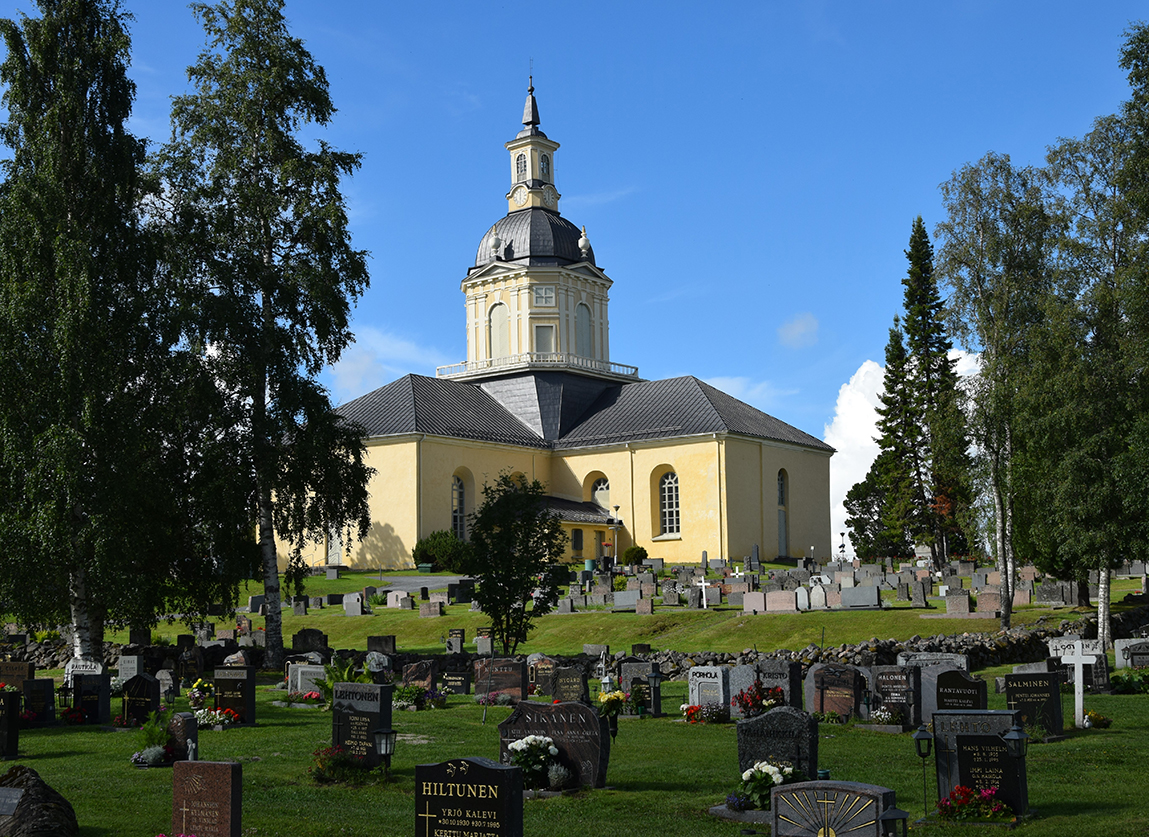
The Alatornio church is located on the Pirkkiö island, where measurements were taken by scientist from Russia and Sweden. Photo: Jarno Niskala.
The Littman theodolite was manufactured in Stockholm in 1834. Swedish scientists used it in the north to take horizontal angle measurements in the 1840s. The lines between Kaakamavaara, the Alatornio church and Perävaara were measured in September 1849 under the supervision of N.H. Selander. Photo: Dan Norin, Lantmäteriet.
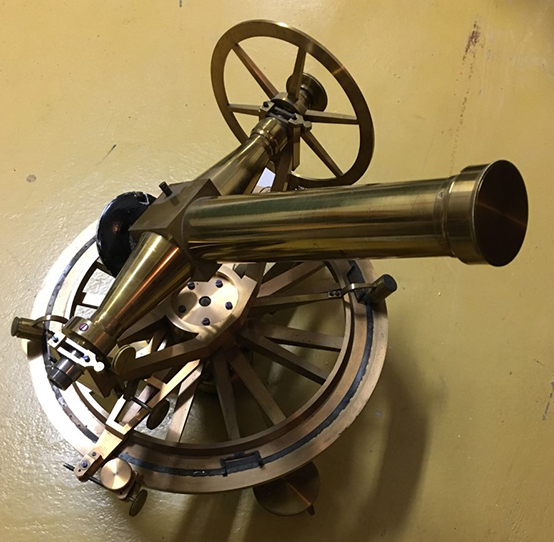
The Alatornio church and Kokkomäki hill as station points
The scientific fieldwork for the Struve Geodetic Arc was conducted in the summers of 1842–1851 in Tornio and the region between the Tornio and Muonio Rivers. The elevations of the measuring points near the church were measured in the autumn of 1842, and the triangulations in the south were finished by 1844. The measurements were taken under the supervision of the Finnish Fredrik Woldstedt, who worked for the Pulkovo Astronomical Observatory of the Russian Academy of Sciences in Saint Petersburg. Woldstedt worked closely with Struve.
The Swedes measured the angles between the southernmost stations of the Lapland portion of the chain in 1849. The southernmost triangle was formed by the Alatornio church, Kaakamavaara and Perävaara station points. The leader of the Swedish expedition was Nils Haqvin Selander, an astronomist and a member of the Riksdag of the Estates This means research groups from both nations worked in the area.
The Alatornio church and the Kokkomäki hill nearby were both used as station points for the triangulation. The Russian Academy of Sciences was in charge of the Kokkomäki station point and the Royal Swedish Academy of Sciences was in charge of the station point at the church. The church is visible from a large distance, and the view from the church tower also reaches far. The measurements were taken on the bell chamber balcony, which is slightly to the side from the centre of the tower. The centre of the tower also had to be determined by using triangulation.
The measuring instrument was most likely placed on a separate table on the bell chamber balcony. The table is still there. The tower’s bell chamber has engravings from 1851, possibly made by members of Lindhagen’s research group. The Kokkomäki station point, filled with lead, was found to be in its original condition in an inventory conducted at the start of the 1900s. Later, more land was brought to the location, but the station point is marked with a metal pole.

The structures of the church and its bell chamber are unique. The walls and the large support beams feature writings dating back to the years the church was built. A view to the horizon awaits beyond the large doors.
Photo: Panu Pohjola.
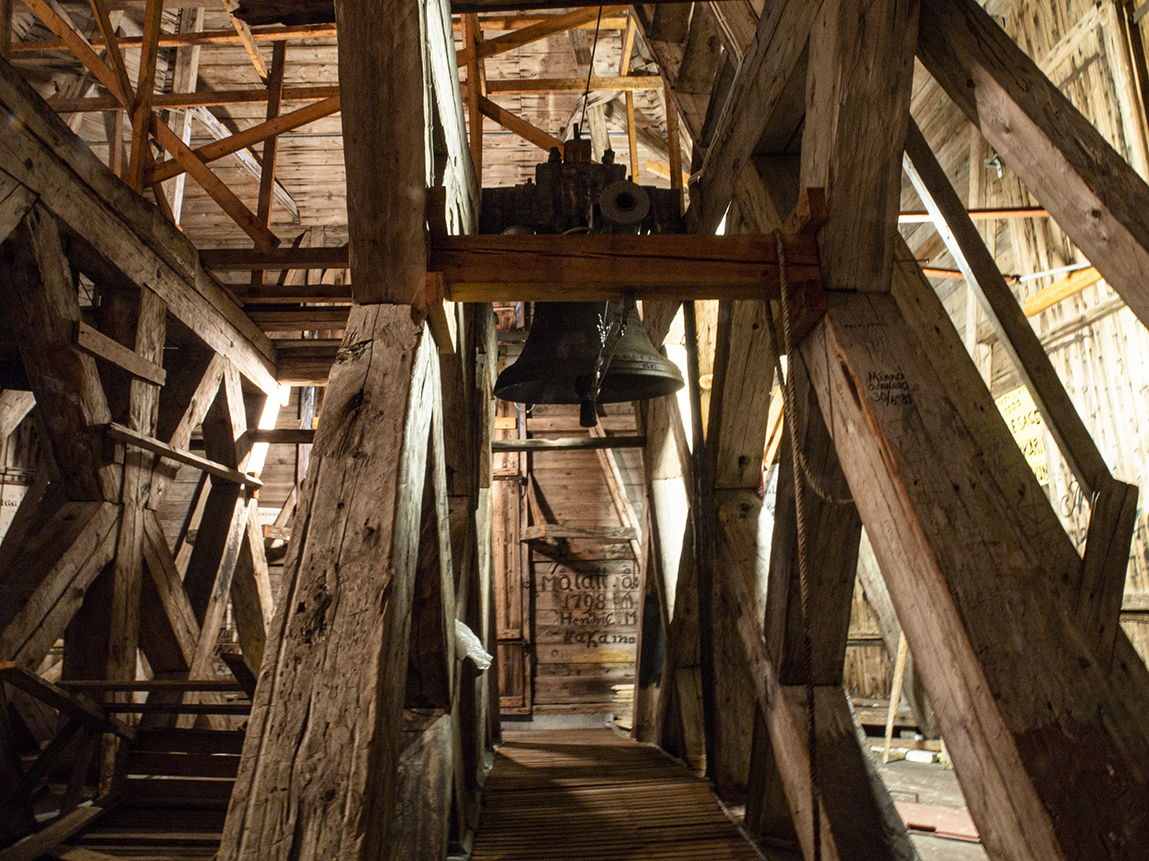
Photo: Pia Keränen.
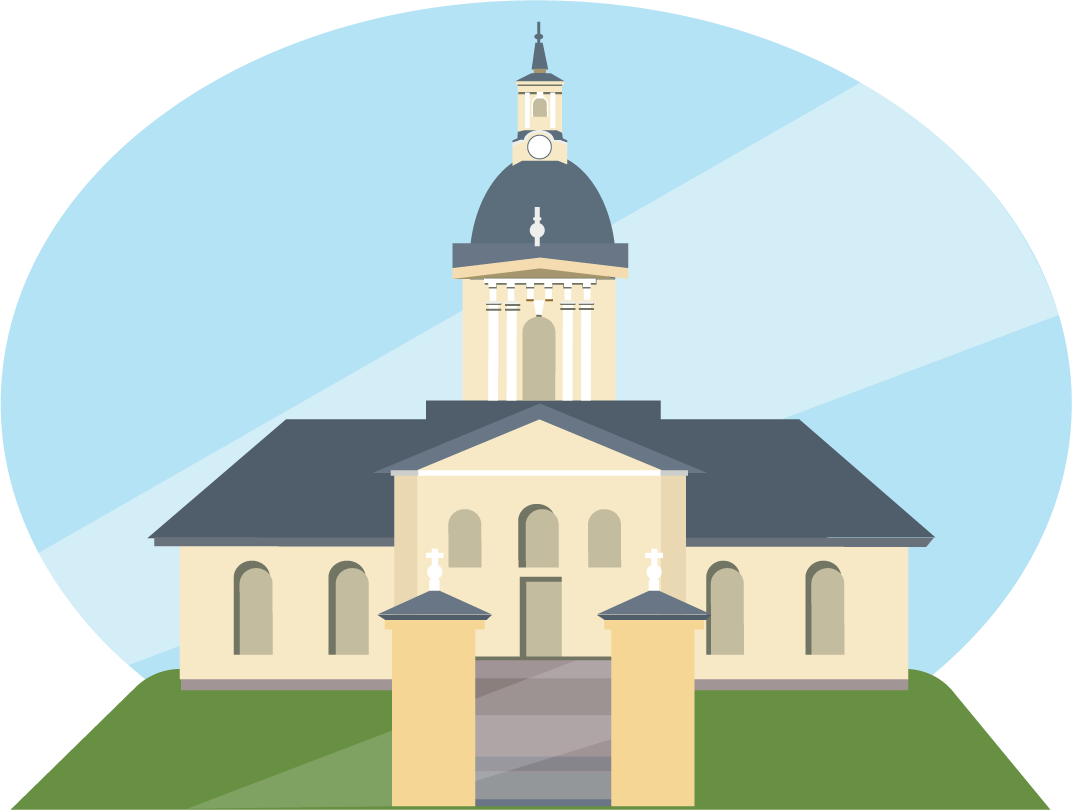
Astronomy research station
In 1851, a research group from the Russian Academy of Sciences came to connect the triangulation chains. This expedition was led by a Swedish scientist: D.G. Lindhagen who worked for the Pulkovo Astronomical Observatory. In addition to the church building itself, the surrounding area was well suited to be used as an astronomical research station due to it being a central location and still not being too densely populated. The scientists wanted to be able to work in peace. Some very valuable research equipment was stored at the research station, which meant it had to be under guard at all times when the scientists were away.
The research station was built on an open sandy hill, 279 metres to approximately southeast from the church. On the east-side of the station was a flat area with an excellent view to the other nearby station points. The triangulation chain was aligned on the surface of the Earth with the astronomical measurements taken at the research station. The station was connected to the Alatornio church, the church of Tornio and the Kokkomäki hill station point with a small, 170-metre long baseline and triangulation. This baseline was measured by using a pole that was exactly 22 feet in length and placed on top of three-legged stands.
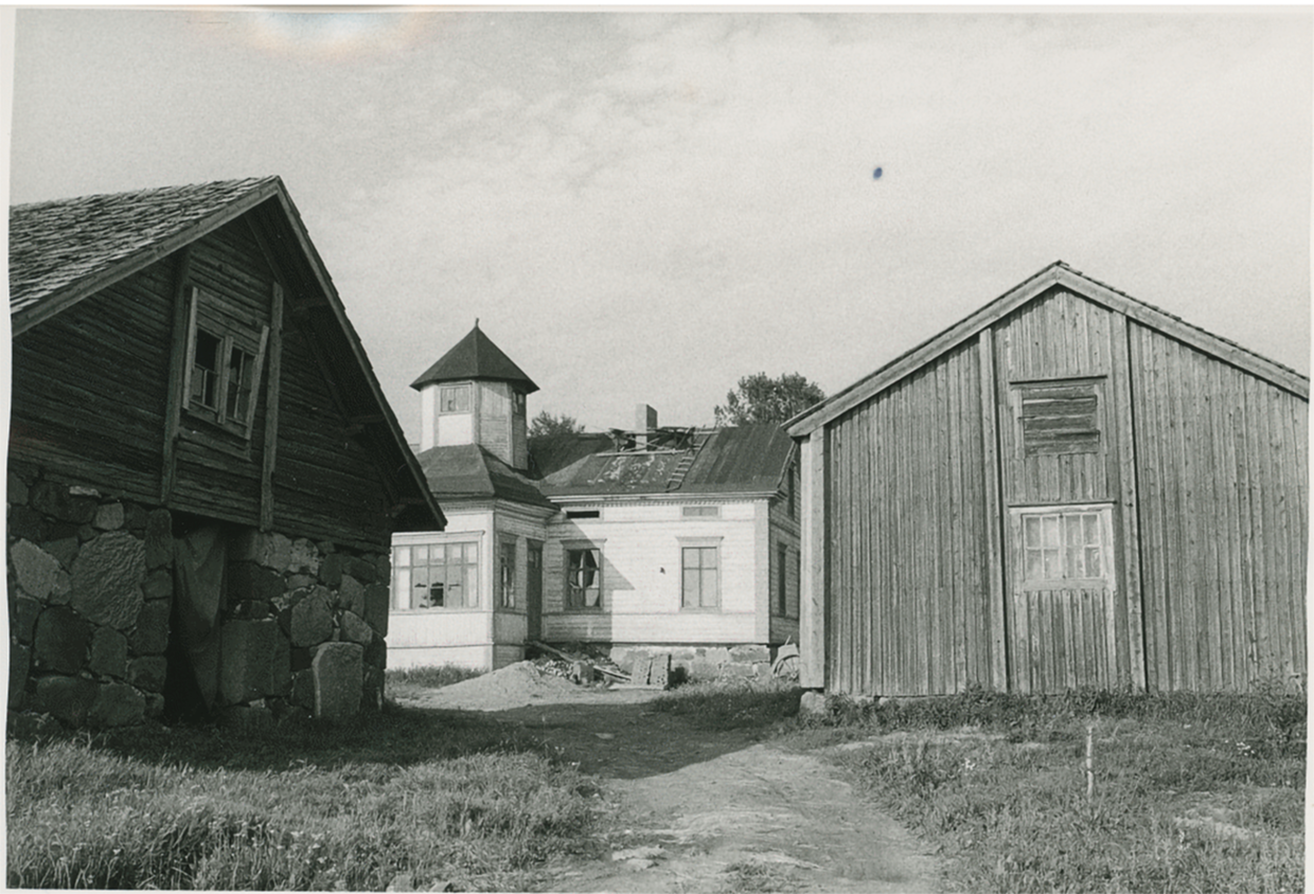
At the time of the measurements, astronomy was popular outside of universities and science academies as well. In the Kuussaari house in Raumo was an observatory. The owner of the house, Emil Broms, had several telescopes. One of them was two metres long and could be used to look at stars even in broad daylight. The ceiling of the observatory has a special opening mechanism. Photo: Reino Kainulainen, 1973. Collection of the Museum of Tornio Valley.
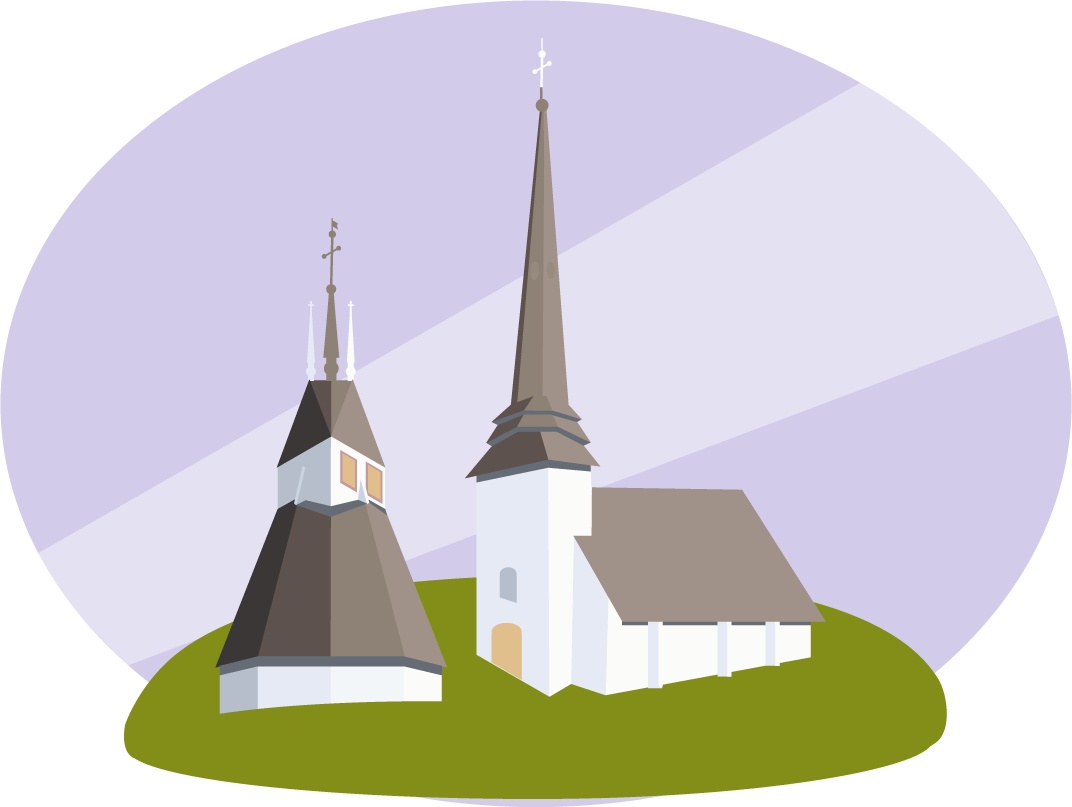
Trips to Kaakamavaara and Kivalo
Lindhagen, his assistant Wagner and their local workers also visited Kaakamavaara and Kivalo in 1851, where they measured the angles towards the Alatornio church and Kokkomäki. After the chains were connected, one of the triangles of the chain was formed by Kivalo, Ajos and the Alatornio church. Naturally, as the massive project progressed, some challenges were faced. One of these challenges was the fact that a proper line of sight could not be established to Kokkomäki from Kaakamavaara.
Before Kaakamavaara, Lindhagen met with the leader of the Swedish team, Selander, in the Frankkila house in Kukkola. From there, the men continued to Ylitornio together to take baseline measurements. The previous year, Lindhagen had worked with a team of Norwegians measuring the baseline in Alta. The baselines were measured in the field with utmost care. The baselines were converted into sides of large triangles with triangulation, which ensured the network of triangles was in the proper scale.
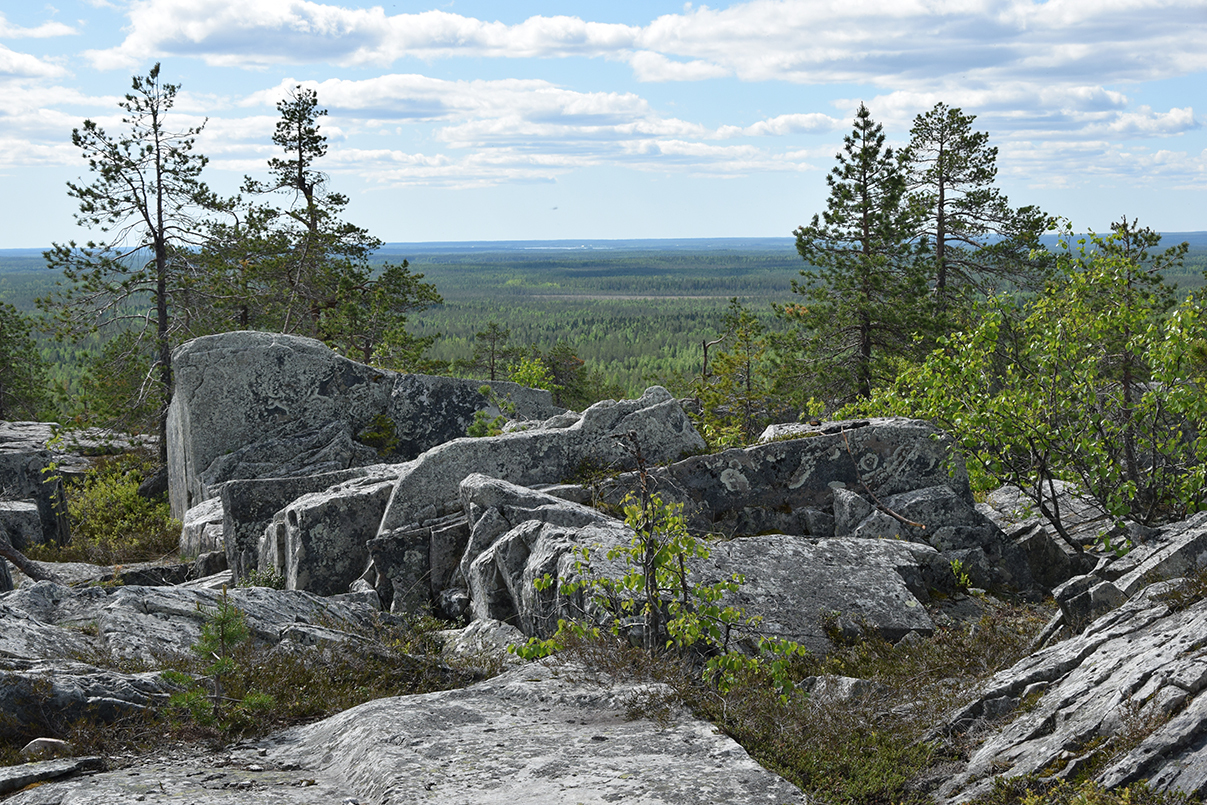
Kaakamavaara is part of scientific history. The route to Kaakamavaara started from Karunki, and the route to the top of the large hill ran through the Nahkiaisoja estate, which is still there today. The top of the hill is sometimes called ‘tynnyrilaki’, i.e. ‘barrel top’ in Finnish, in reference to the barrel attached to a high pole on top of the hill, which served as a signal for the measurements. Photo: Jarno Niskala.
The Struve Geodetic Arc, a World Heritage,
is an impressive chain of measurements used to measure the size and shape of the Earth in the 19th century.
The Struve Geodetic Arc is a chain of triangulations reaching from the Black Sea to the Arctic Ocean. The triangulations, or the Russo-Scandinavian meridian measurements, were an extensive project conducted between 1816 and 1855. The collaboration was headed by F.G.W. Struve. In the north, the chain runs along the region between the Tornio and Muonio Rivers and toward Hammerfest in Norway.
The aim of the measurements was to determine the length of the meridian more accurately, an imaginary arc on the Earth’s surface. The measurements were also an important step toward more accurate maps. More accurate measurements could only be taken after satellite navigation was invented. The Struve Geodetic Arc was inscribed on the UNESCO World Heritage List in 2005. The chain is a significant human accomplishment and a testament to what cooperation between states can achieve.

The Struve Geodetic Arc consists of triangles formed by the station points. Among them, Perävaara, Aavasaksa and the Alatornio church are World Heritage Sites. Photo: National Land Survey of Finland.
Today, distances can be measured with electronic equipment. Photo: David Shay CC BY-SA 3.0

Map of Alatornio area





